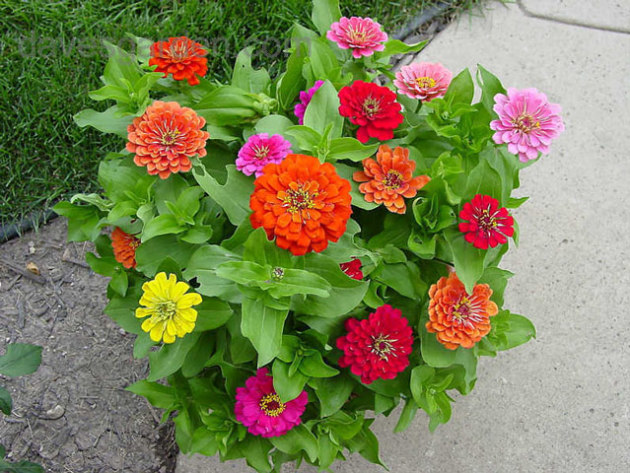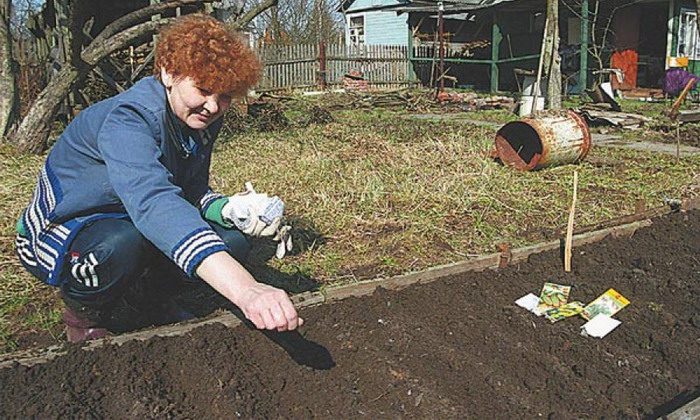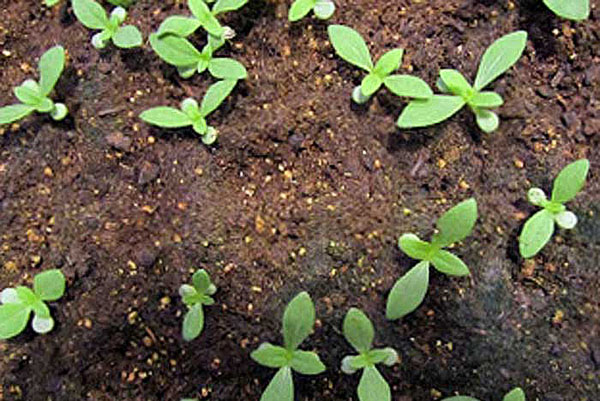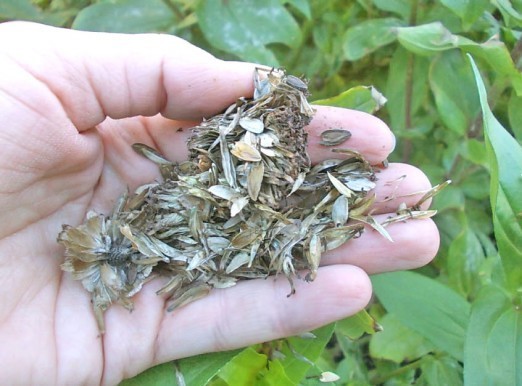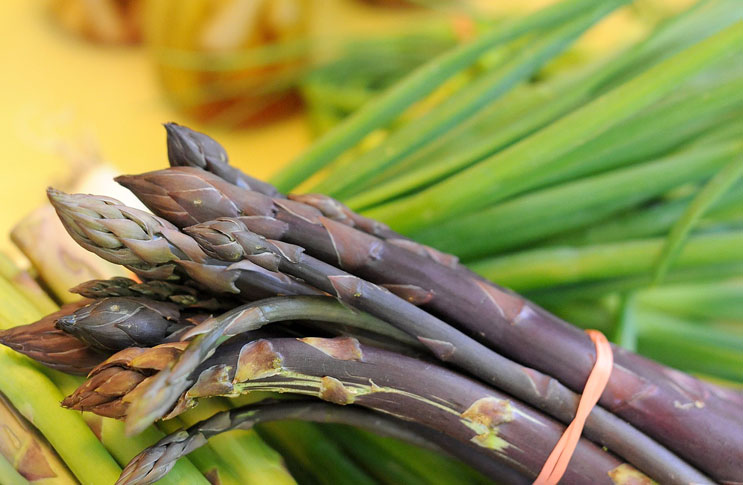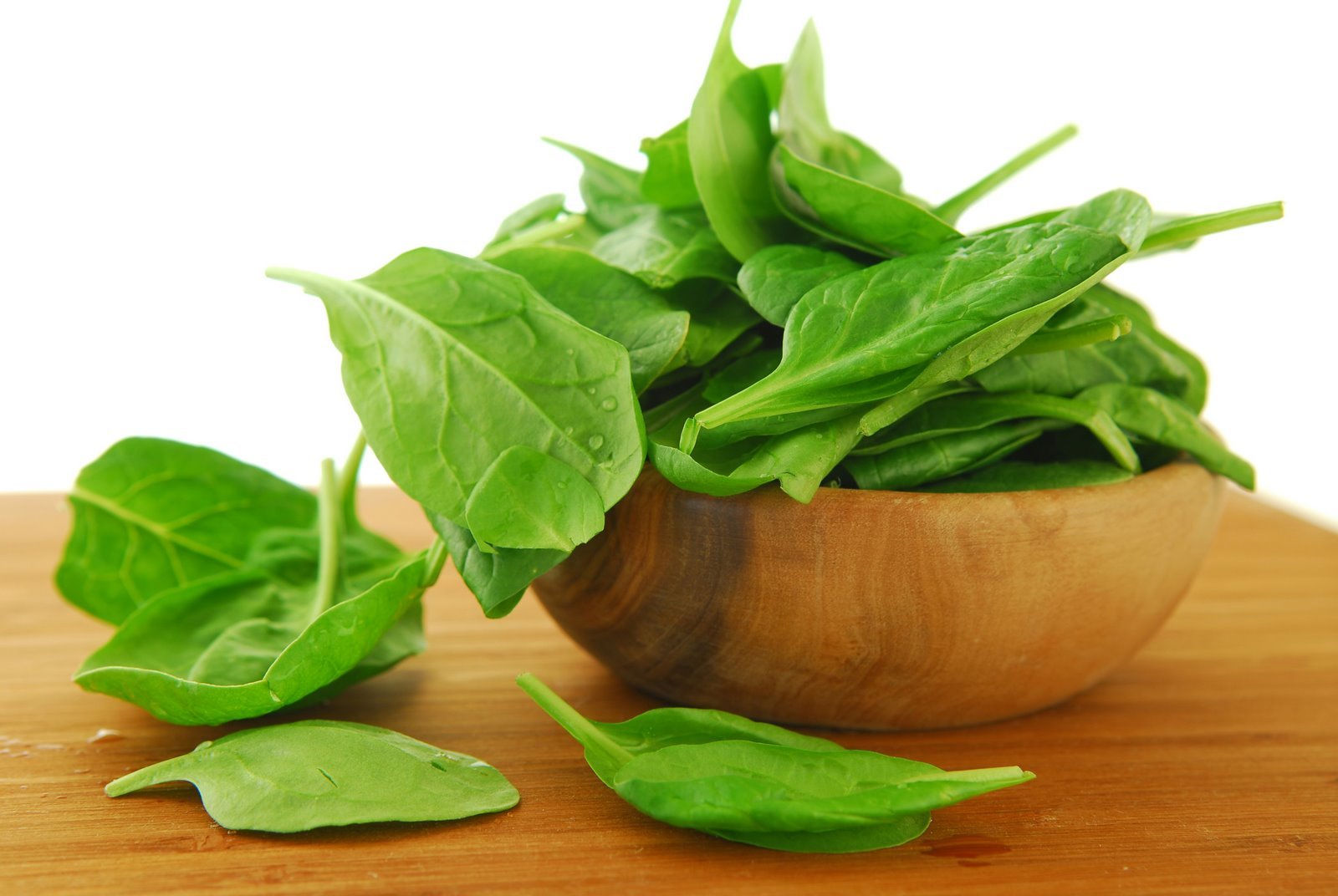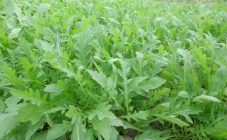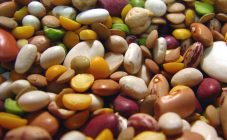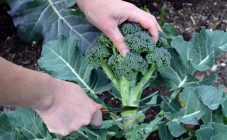Content:
Tsinia, which is popularly called the major, is a shrub perennial belonging to the Astrov family. The native land of the plant is considered to be Southern Mexico, and the culture owes its name to the famous botanist I. G. Tsinn. Therefore, wondering whether zinnia or zinnia is right, it is better to give preference to the second version of the name.
The Aztecs began to grow zinnias in the second half of the 15th century, and the seeds of the plant were brought to many European countries in the 18th century. The culture began to enjoy popularity in a short period of time, it was used to decorate tables during aristocratic receptions and garden plots. Today there are more than 25 varieties of zinnia, which differ in shades of buds and duration of flowering.
Zinnia: growing and care in the open field
The height of zinnia depends on what type of plant, and can range from 30 cm to 1.5 m.The distinctive features of this culture include the following:
- The foliage has an ovoid shape and hard hairs along the edges, which are most often located opposite.
- Inflorescences on long peduncles are represented by single apical baskets with a diameter of 4 to 15 cm.
- The color palette for zinnia reed colors includes yellow, white, magenta, orange, and red. As for the tubular middle colors, they are dark red or yellow.
- The fruits are represented by a seed basket with a tuft.
The flowering culture begins in the second half of July and lasts until the onset of the first frost. Zinnia is tolerant of dry and hot weather, but the perennial plant only blooms in areas with warm winters.
Before planting zinnias in open ground, you need to responsibly choose a place for planting. Since zinnia is a lover of heat and sunlight, it is recommended to plant it in areas where there is no abundant shade from large trees.
The soil for cultivating a crop must be fertile and loose, as well as sufficiently illuminated by the sun's rays. It is necessary that the beds are well ventilated, but frequent drafts can harm the plant. Experienced flower growers recommend paying attention to the soil, which should let water pass well, preventing its stagnation.
To correctly determine the optimal time for planting zinnias, you need to periodically pay attention to the weather conditions. If it is very cold at night, it is recommended not to rush to plant the plant. You can plant a crop only if the soil is well warmed up and the air temperature does not drop below zero.
Depending on which planting method is preferred, you need to choose the most suitable month for this procedure. For example, zinnia seeds are planted in open ground in the second half of April. If you plan to plant seedlings, it is advisable to do this in the first half of May.
Growing zinnia from seeds: when to plant
For example, zinnia Pumila does not tolerate even the lightest frosts, both autumn and spring, so it is better to propagate it by seeds or through seedlings. Before planting, the planting material is placed in a damp cloth so that the seeds sprout a little. In most cases, old seeds hatch after 10-15 days, and fresh seeds - after 3-4 days. For planting, peat pots should be preferred, burying the seeds in them by 2 cm.
In order for the planting material to grow well, the temperature regime must be observed in the room - at least 25 ° C. If the plant gradually stretches out, it is picked and buried for the rapid formation of adventitious roots. In the second half of May, they begin to harden the zinnia, bringing peat pots with seedlings to the balcony.
Zinnia: planting and care in the open field
The method of planting low-growing zinnia with seeds is used by gardeners living in the southern regions of Russia. In Siberia, the cultivation and reproduction of zinnia is impossible. And all because due to climatic conditions the soil warms up quickly. To achieve abundant and strong shoots of zinnia, it is recommended to adhere to a step-by-step planting algorithm:
- The planting material, a week before planting in open ground, must be wrapped in a flap of warm tissue, which is pre-moistened with a growth stimulator for germination.
- The planting site should be well lit, and the soil should be prepared in advance: it should be thoroughly loosened, fertilized with superphosphate and river sand in order to improve drainage properties.
- As for the planting scheme, flower growers in most cases adhere to the curly method - they sow planting material in the form of a chamomile, circle or heart.
- On the planned day of planting, the bed must be cleared of stones and weeds.
- Make furrows in the ground, and then sow zinnia seeds, which hatch well.
After planting is complete, the culture should be surrounded by care and attention: ensure regular and abundant watering, remove weeds, apply mineral and organic fertilizers.
Post-care of the plant
In order for the plant to please the owners with its flowering, it must be carefully looked after. As for the care of cynia, it includes several important components:
- pinching of the apical shoots;
- weed removal;
- introduction of complex fertilizers;
- loosening dry soil;
- regular watering.
To achieve the desired result when growing zinnia, the garden must be well watered. It is strictly forbidden that watering is superficial and frequent, it is best to stick to abundant and regular. So the seedlings will absorb moisture, but at the same time it will not stagnate, preventing root rotting.
After watering, the soil between the seedlings is tightened with a dense crust. Drying, the earth begins to harden. This crust prevents air from entering the zinnia root system, which slows down its development. To provide air access to the roots of the culture, after each irrigation procedure, the soil must be loosened.
Weed should be dealt with only until the zinnia begins to bloom. For the development of small and fragile seedlings, nutrients and moisture are needed, which they cannot absorb from the soil if weeds grow nearby. Due to the rapid growth of weeds, oppression of the plant begins, but as soon as zinnia grows, diseases and weeds do not pose a danger to it.
Seed collection
With the onset of autumn, each grower begins to collect seeds. Despite the fact that zinnia seeds form immediately after the first flowering, those harvested in September-October will have 100% germination. Moreover, high sowing qualities are observed only in seeds from shoots of the first order. In order to collect the subsequent inoculum correctly, you need to adhere to the following recommendations:
- Once the seed heads have turned dark brown, they should be removed from the plant, dried, and peeled.
- It is recommended to store seeds collected from zinnia for no more than 3 years and always in a place where there are no sudden changes in temperature. Only under such conditions will the sowing quality be preserved.
- In plants from which it is planned to collect seed, seeds ripening lasts at least 60 days, and only after that they can be harvested.
In the process of caring for a crop, flower growers prune wilted flower heads, and when harvesting seed, it is strictly forbidden to cut off the seed baskets. You can cut them off only after they are fully ripe.
Before growing this plant, which is considered the main decoration of the garden, you need to familiarize yourself with the information on how to care for zinnias. If you surround the plant with care and proper care, it will delight the household for a long time and bloom to the envy of all neighbors.
